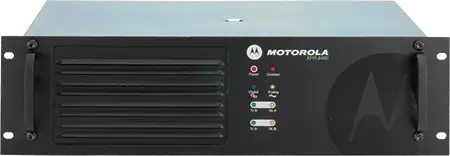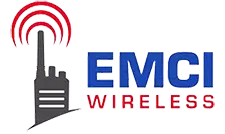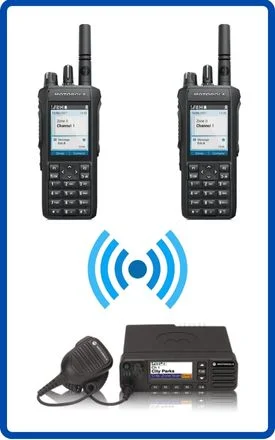
MOTOTRBO XPR 8300 Repeater
Status: Discontinued
Extend Coverage And Capacity Easily with the MOTOTRBO XPR 8300 integrated voice and data base-station/repeater.
Motorola has canceled the XPR 8300 repeater. If you are looking for a replacement repeater, please check out our current Motorola repeater models.
Combining the best of two-way radio with digital technology, MOTOTRBO delivers increased capacity, exceptional voice quality, enhanced battery performance and integrated data communication via the industry’s largest third party application developer program. MOTOTRBO is built to the globally recognized ETSI DMR Tier 2 standard.
Maximize the performance of your MOTOTRBO system with the XPR 8300 repeater. Available in UHF and VHF frequency bands, the XPR 8300 utilizes dynamic mixed mode capability to ease migration by automatically switch between analog and digital mode. XPR 8300 supports two simultaneous voice or data paths in digital mode, doubling capacity without additional equipment.
Feature Highlights
Connect Plus
With extended coverage and expanded voice and data capability, this multi-site digital trunking solution enables you to accommodate the high volume, wide area communication that’s required to keep your mobile work teams connected.
Capacity Plus
A scalable, single-site trunking solution that enables over a thousand radio users to share business-critical voice and data communication on the same system.
IP Site Connect
Extend communication between multiple locations, create continuous wide area coverage or enhance single site coverage.
Reliable performance
Runs 100% continuous full-duty cycle at 40 W.
TDMA digital audio capability
Time-division mulitple-access (TDMA) provides twice the calling capacity for the price of one license.
Easy installation
Wall- or rack-mountable, with sturdy handles.
Transmit Interrupt
Enables intervention during conversations to deliver critical communication exactly when and where needed.
Dynamic Mixed Mode
Allows for automatic switching between analog and digital mode for mixed radio fleets
Models
AAM27JQR9JA7AN 136–174 MHz, 25–45 W, XPR 8300 8 MB Repeater
AAM27JNR9JA7AN 136–174 MHz, 1–25 W, XPR 8300 8 MB Repeater
AAM27QPR9JA7AN 403–470 MHz, 25–40 W, XPR 8300 8 MB Repeater
AAM27QNR9JA7AN 403–470 MHz, 1–25 W, XPR 8300 8 MB Repeater
AAM27TRR9JA7AN 450–512 MHz, 1–40 W, XPR 8300 8 MB Repeater
Technology Compatibility
Analog
Analog technology is a legacy method of communication that enables the transmission of voice between users over dedicated frequencies. While analog technology has served its purpose effectively for decades, it is rapidly being replaced by digital technology, which offers enhanced clarity, security, and efficiency in communication. Digital technology also provides for the ability to incorporate data protocols, whereas analog operation is typically voice communication only. Nevertheless, analog technology remains a critical part of the legacy infrastructure for many land mobile radio systems, particularly in regions where digital upgrades may still be pending.
Digital
Digital technology represents a modern approach to wireless communication. Unlike analog technology, which uses continuous waveforms, digital technology encodes voice and data into discrete, binary code. This transformation allows for more efficient and secure transmission of information over radio waves. Digital technology offers several advantages, including improved voice clarity, reduced interference, and the ability to transmit data alongside voice communication. It also enables advanced features like encryption for secure conversations, GPS tracking for location services, and the integration of various applications for enhanced functionality. Digital technology has become the standard for many public safety agencies, commercial businesses, and organizations relying on reliable and efficient communication in their operations, making it a crucial component of modern land mobile radio systems.
Radio System Compatibility
Motorola Two-Way Radio Systems
Direct Mode
All MOTOTRBO two-way radios have the capability to connect directly: radio-to-radio, for basic voice, data, text, and application support. However, this approach has limitations.
Conventional
A conventional system is a step up from basic radio-to-radio communications. Radios communicate via a high-power repeater, giving better coverage and more centralized control.







